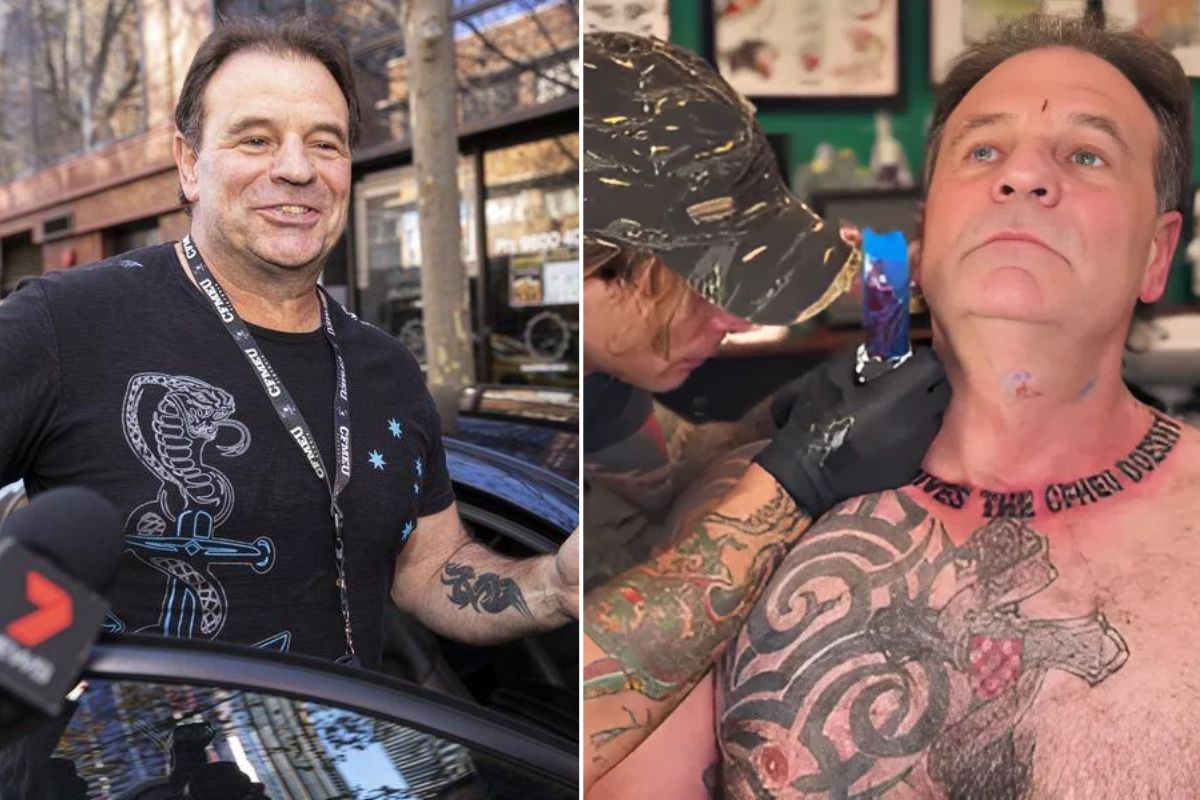CFMEU John Setka Tattoo – A Symbol of Union Loyalty and Controversy in the Spotlight

John Setka, a well-known union leader, has been a divisive figure in both Australian politics and the labour movement for a long time. As secretary of the CFMEU’s Victorian branch, Setka has been a key architect of Australian trade unionism. But apart from his political influence, Setka has drawn attention because of what he symbolises personally — namely, the CFMEU tattoo that he wears proudly on his arm. This tattoo is more than body art: It reflects his lifelong dedication to the union and has, over the years, become a symbol of loyalty and controversy.
The CFMEU and John Setka’s Role in Australian Labour Politics
The CFMEU is one of Australia’s most powerful labour unions, including workers in critical industries like construction, mining, energy and forestry. It has its roots in activism, organising for improved remuneration, working conditions and other rights for workers, but often by way of direct action and demonstrations. John Setka is a polarising figure as a union leader, respected by allies for his formidable skills and hard-line approach when fighting for workers’ rights and reviled by enemies for what many consider thuggish tactics and a loudmouth disposition.
Setka’s behaviour in leading the CFMEU has often earned it a place of contention. His belligerent stance toward employers and politicians and a series of legal troubles and incendiary statements have made him a lightning rod of bitter contention. And while Setka has come up against significant opposition, many in the union continue to regard him as a vocal advocate for the workers in state politics.
John Setka Neck Tattoo
Veteran CFMEU leader John Setka unveiled a dramatic new neck tattoo in August 2024, weeks after quitting as president of his storied union amid allegations of extreme corruption and bikie infestation. The tattoo, which he acquired on his collarbone, contains the words “God forgives, the CFMEU doesn’t“-a favored slogan among Construction, Forestry and Maritime Employees Union members that makes its way on to union T-shirts and represents the union’s tough, uncompromising image.
Setka’s decision to get the tattoo was seen by everyone as a public show of commitment to the union despite his resignation, and it became a national sensation quickly, with photos and videos of the tattooing process posted by the artist at Classic Ink Tattoo in Yarraville. The tattoo date and message also fueled controversy surrounding Setka’s legacy and the CFMEU culture, with political leaders like Prime Minister Anthony Albanese condemning his actions and calling for change within the union.
The Controversy Surrounding CFMEU John Setka tattoo
CFMEU John Setka tattoo — both an uncomplicated symbol of union pride and a focal point of controversy, both internal and external — had never been more politically fraught than it would be in the months to come as his leadership was rocked by legal and political scandals. Various tattoos have thrust themselves into the spotlight on several occasions and are often a lightning rod for conversations about the future of unionism in Australia.
CFMEU John Setka’s tattoo first garnered widespread media attention when he was embroiled in legal battles. Setka had been at odds with the Australian government in 2019 over accusations of criminal activity and anti-social behaviour. His critics, including Labour politicians, said that his combative style of leadership of the CFMEU and his public comments were out of line with new union practices and current norms in Australian society. As such, his tattoo with its bold embodiment of union loyalty became something of a symbol for the “old-school” approach to unionism, which emphasised confrontation and defiance over collaboration and negotiation, at least as some would have it.
Furthermore, the CFMEU John Setka tattoo has become a weapon for political commentators and his opponents to attack his style of leadership. For more than a decade, labour activists have sported T-shirt tattoos of the 19th-century labour leader Samuel Gompers, who famously pitted workers against the bosses and for some people to dislike him, a more militant, adversarial style of upward work relations — which over the years seems anathema to the more dialogue-and-compromise-oriented impulse in the labour movement today. CFMEU John Setka tattoo then has become, by default,t a shorthand symbol of the controversy engulfing his leadership and by extension, the direction of the CFMEU.
CFMEU John Setka tattoo: A Symbol of Strength for Supporters
While the CFMEU John Setka tattoo continues to generate controversy in floating negative sentiments from conservative media, who only opposes vitality for them, for supporters of Setka and the CFMEU alike, this tattoo represents nothing more than an unwavering cause or even a union cause. To members of a union, the tattoo is a symbol of the struggle over better wages and conditions and job security. It’s considered a badge of honour, symbolising Setka’s commitment both to the causes and the price paid for defending workers.
The tattoo also holds significance for those who subscribe to his specific brand of unionism — unapologetically militant and focused on direct action. To them, CFMEU John Setka tattoo embodies the resilience, determination and solidarity that is the lifeblood of the labour movement. The tattoo is meant as both a testimony to Setka’s individualistic beliefs and a badge of honour to the working class.
Changing Perceptions: A New Era of Unionism?
The debate over the future direction of unionism in Australia has been growing in recent years. Although unions like the CFMEU have a history of using aggressive, hard-line tactics, there is an effort within sections of the union movement to adopt a more sophisticated and strategic technique to win rights for workers. Setka’s leadership and his tattoo — emblematic of that older, more militant style of unionism — are increasingly seen as symbols of the internal friction within organized labour.
His critics say his tough-guy ways and the imagery associated with his CFMEU tattoo are no longer suitable in the modern political era, with unionism being urged to adapt. His supporters, for their part, contend that his gutsy, unsentimental approach is exactly the tonic workers need to weather an increasingly precarious economy.
In this sense, the CFMEU tattoo is a metaphor for the ongoing conflicts within the union movement itself. As the shift between eras of labour politics continues to unfold in Australian politics after events this week, Setka’s tattoo may eventually come to be seen as an anachronism, or maybe as a badge of honour, fighting back against the new wave.
Conclusion: A Symbol of Loyalty and Division
CFMEU John Setka tattoo represents a powerful force of a man who remains dedicated to the union and the labourers it embodies. It reflects his steadfast commitment to labour rights and his conviction about the power of collective action. But it’s also a symbol that is now inextricably linked to the controversies and disputes that have swirled around Setka’s reign. Whether it’s seen as a badge of honour or a mark of divisiveness, the tattoo is bound to continue to provoke debate as Setka’s place in the labour movement changes.
As Australian unionism meets fresh headwinds and opens new horizons for labour movements, Setka’s tattoo is a powerful, literal and symbolic manifestation of the beliefs that have motivated him in his role — and the enduring battle for workers’ rights in an ever-evolving environment.






